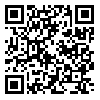Volume 7, Issue 13 (2020)
QHTS 2020, 7(13): 129-162 |
Back to browse issues page
Download citation:
BibTeX | RIS | EndNote | Medlars | ProCite | Reference Manager | RefWorks
Send citation to:



BibTeX | RIS | EndNote | Medlars | ProCite | Reference Manager | RefWorks
Send citation to:
shahgoli M, Amini N. Semantic Differences of “'Uṣyān”, “Ṭughyān”, and “Baghy” in The Holy Qur’an and Their Reflections in Translations
of The Qur’an. QHTS 2020; 7 (13) :129-162
URL: http://qhts.modares.ac.ir/article-10-38187-en.html
URL: http://qhts.modares.ac.ir/article-10-38187-en.html
1- University of Usoul Din, Qom , Shahgoli110@gmail.com
2- University of Gilan
2- University of Gilan
Abstract: (3877 Views)
Recognizing the semantic differences of close meaning words is one of the most important challenges concerning the Qur’an, especially in the translation of the Qur’an; For in the Qur’an Allah Almighty wisely chose one word and ignored its synonyms, the fact that if be neglected will lead to an incomplete translation of the meaning of the divine purpose into the second language. The present research aims to study the semantic differences of the three Qur’anic words “'Uṣyān”, “Ṭughyān”, and “Baghy” through analyzing evidences of lexical sources and interpretive tradition and emphasizing semantic implications and contextual approaches. Then it evaluates the Persian translators of the Qur’an in terms of their successfully reflections of the differences. Findings show that “'Uṣyān” means absolute negligence in disobeying the command of the Lord and disregarding it, “Ṭughyān” is exceeding in “'Uṣyān”, and “Baghy” in the absolute demand of aggression and exceeding, whether this demand is at will or it comes to action. However, in “Baghy”, the public and civil aspect of “'Uṣyān” is considered. As a translator, these differences are also reflected in interpretive translations more, better and clearer.
Article Type: مقالات علمی پژوهشی |
Subject:
Arts and Humanities (General)
Received: 2019/11/10 | Accepted: 2020/06/9 | Published: 2020/09/12
Received: 2019/11/10 | Accepted: 2020/06/9 | Published: 2020/09/12
Send email to the article author
| Rights and permissions | |
 |
This work is licensed under a Creative Commons Attribution-NonCommercial 4.0 International License. |







